Xi'an means Western Peace and it was one of the first capitals of a unified China, before Nanjing and Beijing. Long before Marco Polo, travelers came here to trade and seeds were some of the first things that came and stayed. For those of us who think about 'introduced species', seeds and plants were brought by man from one part of the planet to the other as long as man has moved around. Our guide told us that melons were one of the items brought to China and the name for watermelon (Xi Guo) means Western fruit.
We left early on a Saturday morning and flew to Xi'an. By the time I gained consciousness on the flight, we were flying over mountains and then we came to a flat plateau before we landed in Xi'an.
That line down the center of the next photo is a railway line.
One of those emperors who unified China back in the day was very concerned about his own immortality. To protect him in the afterlife, he commissioned hundreds of terracotta figures to protect his mausoleum. Back in the 70's, when China was still ruled by Chairman Mao, a group of farmers found a few fragments of terracotta at a well. They told the local officials, who told the officials in Beijing who didn't think much of the whole thing. But they sent a few archeologists down anyway. Nothing much happened for a few years but later in the 70's, people realized what they had found.
Today there is a beautiful complex that protects and showcases the farmers' find. The last of the farmers is still alive and apparently comes to the museum to sign copies of the guidebooks periodically.
It was a beautifully clear day in contrast to the next, as you will see.
The emperor built himself a mausoleum, and then protected his mausoleum with hundreds of terracotta warriors, horses, chariots, and even some actual animals. His mausoleum has not been excavated and only a portion of the protective army has been excavated.
This is a map of the area. The three pits that have been excavated are at the far end of the map. I wonder what else he has buried there with himself. Maybe there are some archeologists excavating the area, but nothing is publicized but what is on display.
There are many world famous sights that look exactly like their photographs. The Taj Mahal is one of these, as is the Roman Colosseum. Yes, it is amazing to stand there right next to them but there is a feeling of deja vu. Not so with the warriors. Everyone has seen photos of the warriors but the scale just boggles the mind!
This is pit #1, the largest of the three. Each warrior is larger than life. They vary in size and weight with the archers being the lightest and the generals being the largest and heaviest. So look at that photo and just imagine how big the whole pit is. The raised sections in the middle are the supports that held up the roof. There were wooden beams and then a roof with matting on top. Above the matting was soil so no one walking above would realize there was all this beneath them. The wood roof had long since rotted and the warriors were found broken and mixed up with the roof materials.
There are phalanxes of warriors in the middle and on the outsides, the warriors face outward.
The well where pit 1 was discovered is just off to the left of the photo above.
Here is another panoramic view of pit 1. I was testing the pano setting on my camera.
The people give you a sense of the scale on the far side vs. the people on the right who are on my side.
A close up of the warriors...
You can see where the roof supports rested. Another shot of pit 1.
Much of pit 1 is not excavated. This is true of the other pits also. The problem is that the warriors deteriorate and there are just more of the same. So there have been some test digs in other parts and then they've remained covered up.
Putting them together is one giant jigsaw puzzle. The bodies are of a few basic forms. The heads are all different. They were cast the same but each has different features and expressions. So it doesn't matter which head goes on which body but putting all those pieces together into complete bodies is quite a job.
Although there is no one working in pit 1 currently, there is a set-up on the far side that shows what it is like. They wrap the glued pieces in plastic wrap till the glue sets. This poster shows the work that is needed to restore each figure.
Pit 1 is the largest of the three pits and pit 3 is the smallest. It is set up differently and the feeling is that it was supposed to be the command center of the army. The figures are arranged differently. They face each other with protective soldiers around the perimeter.
Here's what the pits look like when they are excavated. This area is also where they found some real animal bones, that is not clay animals.
The marker that says '38' is where the animal bones were found. Pit 3 also has horses in it.
The buildings in the complex are decorated with some of the warriors faces.
Some of the warriors are set up so one can get up close and personal with them.
This is a kneeling archer, the lightest and smallest of the figures. You can see how detailed the clothing and features are. There are braids in the hair and the tunics are extraordinarily detailed.
And this is a general, one of the larger figures. See how detailed his costume is.
Pit 2 is mostly intact. They found the painted warriors here and suspect that all the warrior figures were painted at one time. But the color disappears when exposed to air so they've left the figures intact for now.
Here you can visualize the roof a little better. And see the fragments that have to be put together to recreate the figures.
This is a photo of a painted face taken when it was found.
I said it was a beautiful day, right? Here you can see the mountains outside Xi'an from the complex.
In addition to the warriors, some other figures have also been found. They are thought to be entertainers for the afterlife. As such, they are generically labeled acrobats.
The other major find in the pits are bronze chariots with horses. These are smaller than lifesize - maybe 3/4 size?
They are extraordinarily detailed. The chariot even has a window that slides open and closed.
Since this is already a long post, I will defer the rest of the Xi'an visit to another post. Xi'an has a large Muslim population and relations between them and the majority Han Chinese population has not been great at times. There are still some issues with the government and discrimination but they mostly coexist peacefully these days.
Treats to come include photos of the Muslim quarter, the city walls and other historical buildings and more. Stay tuned!
We left early on a Saturday morning and flew to Xi'an. By the time I gained consciousness on the flight, we were flying over mountains and then we came to a flat plateau before we landed in Xi'an.
That line down the center of the next photo is a railway line.
One of those emperors who unified China back in the day was very concerned about his own immortality. To protect him in the afterlife, he commissioned hundreds of terracotta figures to protect his mausoleum. Back in the 70's, when China was still ruled by Chairman Mao, a group of farmers found a few fragments of terracotta at a well. They told the local officials, who told the officials in Beijing who didn't think much of the whole thing. But they sent a few archeologists down anyway. Nothing much happened for a few years but later in the 70's, people realized what they had found.
Today there is a beautiful complex that protects and showcases the farmers' find. The last of the farmers is still alive and apparently comes to the museum to sign copies of the guidebooks periodically.
It was a beautifully clear day in contrast to the next, as you will see.
The emperor built himself a mausoleum, and then protected his mausoleum with hundreds of terracotta warriors, horses, chariots, and even some actual animals. His mausoleum has not been excavated and only a portion of the protective army has been excavated.
This is a map of the area. The three pits that have been excavated are at the far end of the map. I wonder what else he has buried there with himself. Maybe there are some archeologists excavating the area, but nothing is publicized but what is on display.
There are many world famous sights that look exactly like their photographs. The Taj Mahal is one of these, as is the Roman Colosseum. Yes, it is amazing to stand there right next to them but there is a feeling of deja vu. Not so with the warriors. Everyone has seen photos of the warriors but the scale just boggles the mind!
This is pit #1, the largest of the three. Each warrior is larger than life. They vary in size and weight with the archers being the lightest and the generals being the largest and heaviest. So look at that photo and just imagine how big the whole pit is. The raised sections in the middle are the supports that held up the roof. There were wooden beams and then a roof with matting on top. Above the matting was soil so no one walking above would realize there was all this beneath them. The wood roof had long since rotted and the warriors were found broken and mixed up with the roof materials.
There are phalanxes of warriors in the middle and on the outsides, the warriors face outward.
The well where pit 1 was discovered is just off to the left of the photo above.
Here is another panoramic view of pit 1. I was testing the pano setting on my camera.
The people give you a sense of the scale on the far side vs. the people on the right who are on my side.
A close up of the warriors...
You can see where the roof supports rested. Another shot of pit 1.
Putting them together is one giant jigsaw puzzle. The bodies are of a few basic forms. The heads are all different. They were cast the same but each has different features and expressions. So it doesn't matter which head goes on which body but putting all those pieces together into complete bodies is quite a job.
Although there is no one working in pit 1 currently, there is a set-up on the far side that shows what it is like. They wrap the glued pieces in plastic wrap till the glue sets. This poster shows the work that is needed to restore each figure.
Pit 1 is the largest of the three pits and pit 3 is the smallest. It is set up differently and the feeling is that it was supposed to be the command center of the army. The figures are arranged differently. They face each other with protective soldiers around the perimeter.
Here's what the pits look like when they are excavated. This area is also where they found some real animal bones, that is not clay animals.
The marker that says '38' is where the animal bones were found. Pit 3 also has horses in it.
The buildings in the complex are decorated with some of the warriors faces.
Some of the warriors are set up so one can get up close and personal with them.
This is a kneeling archer, the lightest and smallest of the figures. You can see how detailed the clothing and features are. There are braids in the hair and the tunics are extraordinarily detailed.
And this is a general, one of the larger figures. See how detailed his costume is.
Pit 2 is mostly intact. They found the painted warriors here and suspect that all the warrior figures were painted at one time. But the color disappears when exposed to air so they've left the figures intact for now.
Here you can visualize the roof a little better. And see the fragments that have to be put together to recreate the figures.
This is a photo of a painted face taken when it was found.
I said it was a beautiful day, right? Here you can see the mountains outside Xi'an from the complex.
In addition to the warriors, some other figures have also been found. They are thought to be entertainers for the afterlife. As such, they are generically labeled acrobats.
The other major find in the pits are bronze chariots with horses. These are smaller than lifesize - maybe 3/4 size?
They are extraordinarily detailed. The chariot even has a window that slides open and closed.
Since this is already a long post, I will defer the rest of the Xi'an visit to another post. Xi'an has a large Muslim population and relations between them and the majority Han Chinese population has not been great at times. There are still some issues with the government and discrimination but they mostly coexist peacefully these days.
Treats to come include photos of the Muslim quarter, the city walls and other historical buildings and more. Stay tuned!




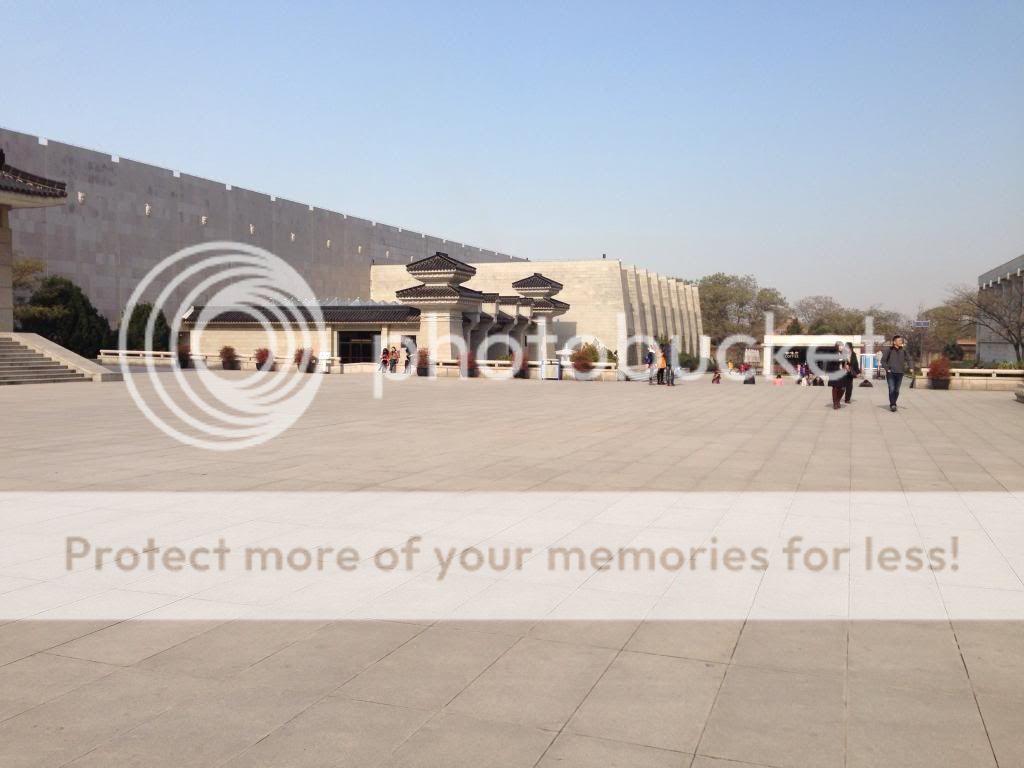


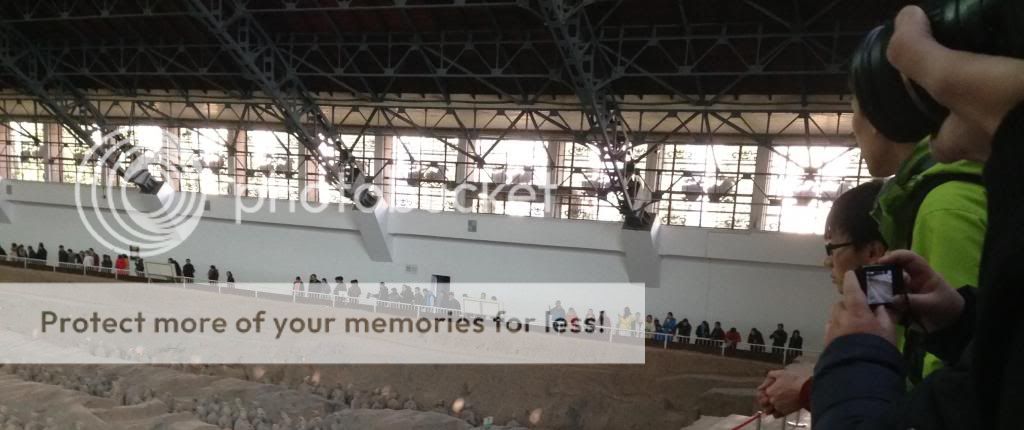





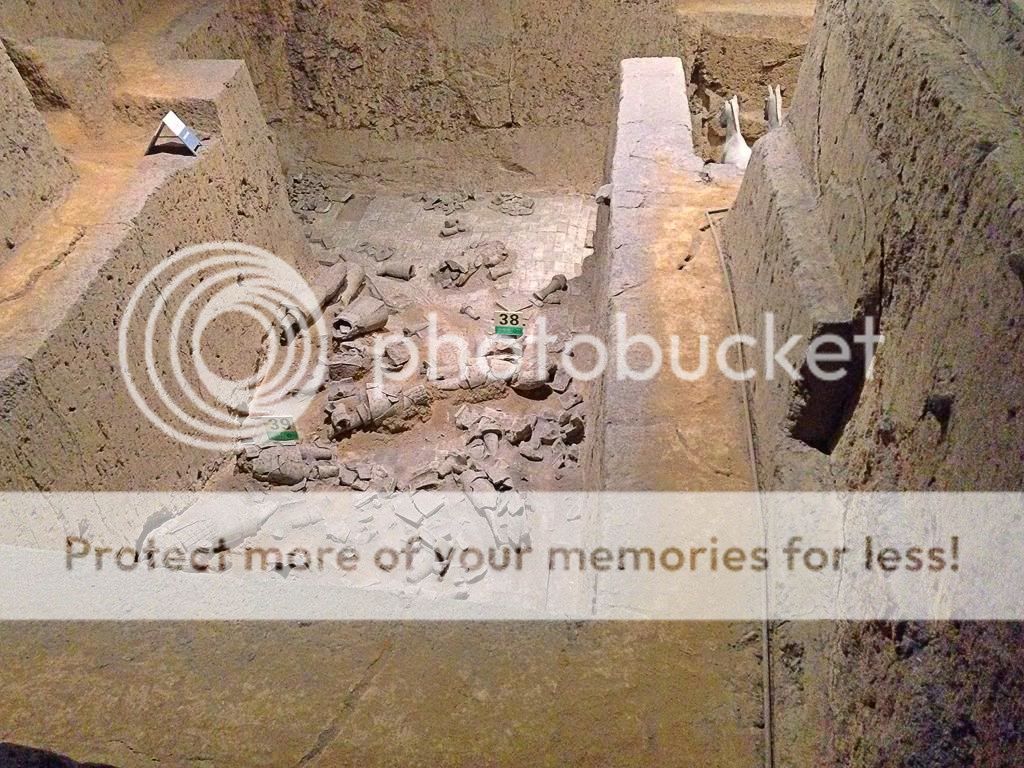



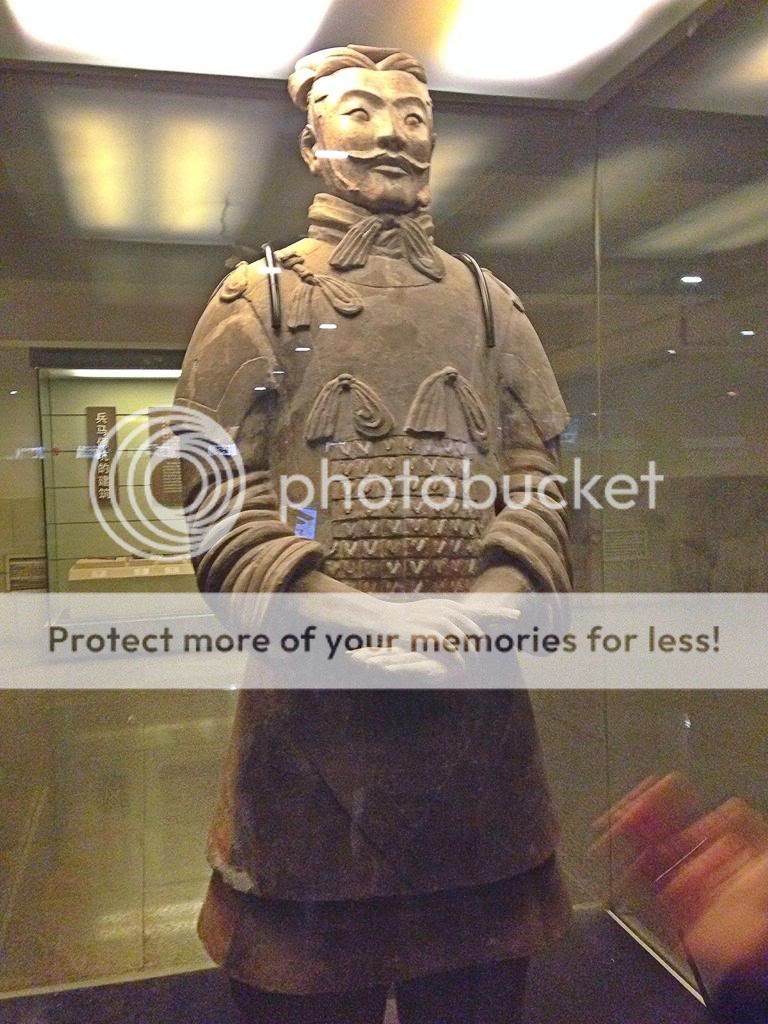




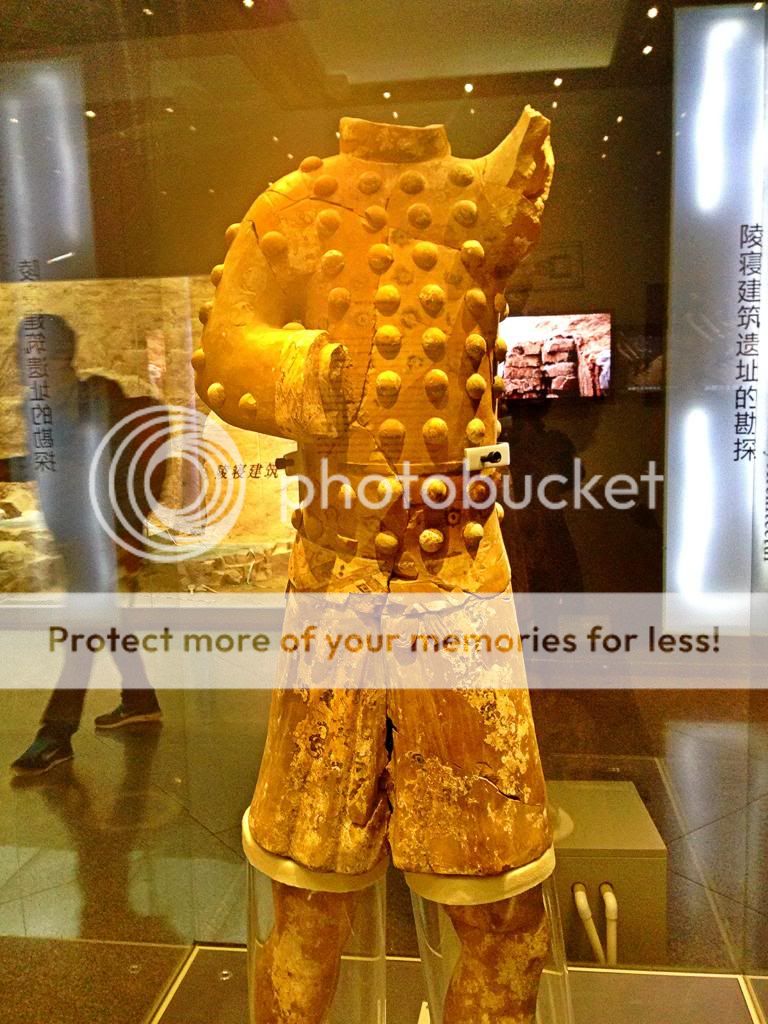


No comments:
Post a Comment